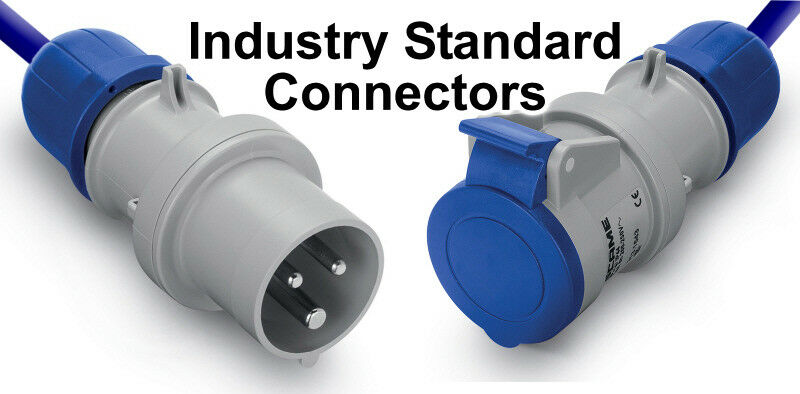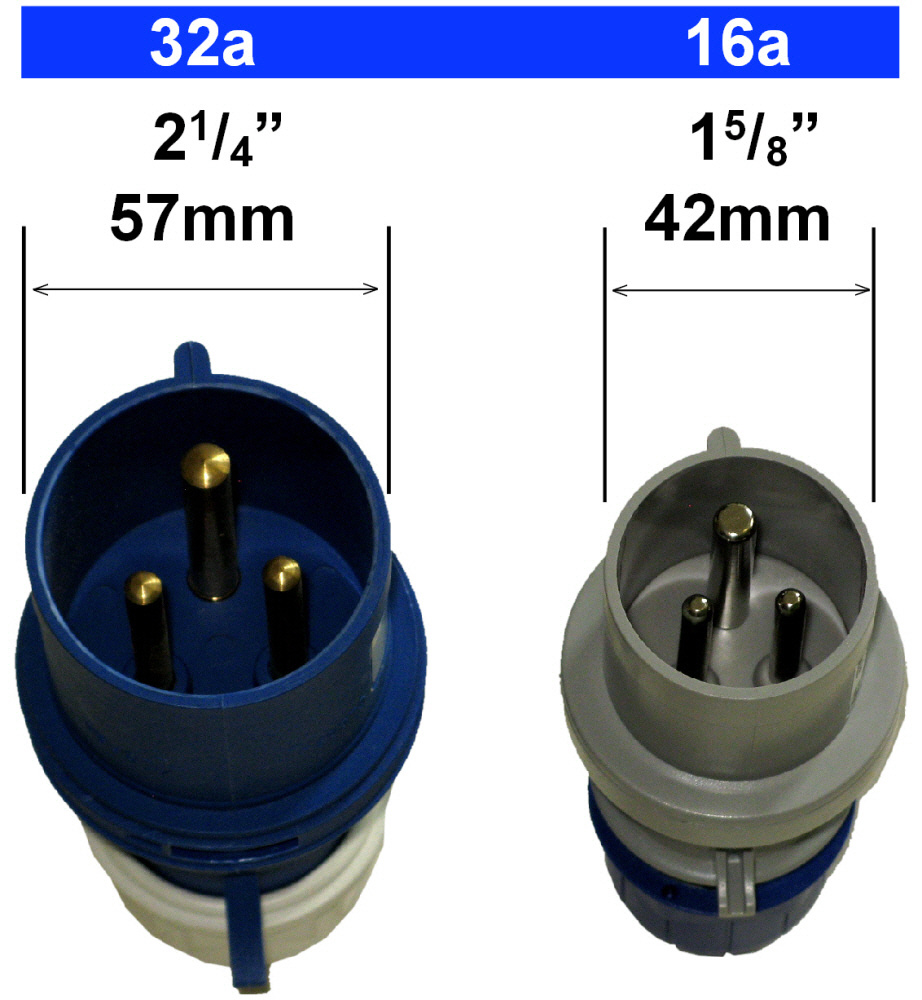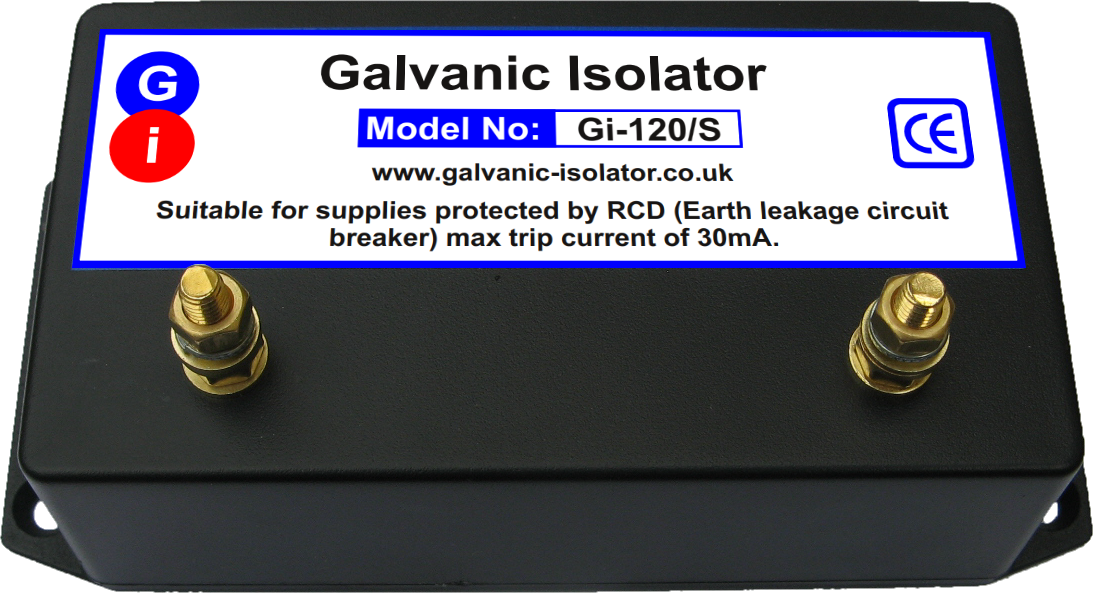Don’t be tempted to think a 32A isolator is somehow “Stronger” than a 16A. It’s not.
If you choose to buy a Plug In Galvanic isolator, it couldn’t be easier - you simply choose an isolator with the correct connections for your system. In the vast majority of cases, this will be standard 16A connectors, similar to the ones in the photo.

Almost certainly, the “Amperage” of your connections will be printed on a label attached to the connector. Failing that, look at the circuit breaker in the electric hook up box. It will have a number, and this will usually be 16 or 32, corresponding to the capacity of the supply.
If you’re still in any doubt, the way to be 100% sure is to simply measure the connectors. The smaller connectors are 16A, the larger 32A. Easy!
The connectors on your isolator absolutely MUST correspond with those on your boat, or they won’t fit.

Fitting a wire in Galvanic isolator isn’t difficult. The basic installation takes a few minutes, and involves only one cable - the earth conductor. You simply split the earth conductor, and connect each wire to a terminal on the isolator.
Only carry out this work if you are competent to do so! (Obvious really, but we have to say it).
It’s easy to think a 32A isolator is somehow “Stronger” than a 16A, but it’s not. They both offer exactly the same protection. So when you’re buying a plug in Galvanic isolator, you can make your choice simply on connector size.
For wire in Galvanic isolators, it might appear a bit more complicated, but in reality, it’s very straightforward. All our Galvanic Isolators have a Surge Rating. The Surge rating of a Galvanic isolator is the maximum current the isolator will carry before the earth trip (RCD) operates. So if there’s a fault, the Galvanic isolator must be able to withstand the temporary overload.
All of our wire in isolators have Surge ratings of at least 500 Amps, ensuring that any of our wire in isolators should prove more than adequate.

To make choosing easy, all of our wire in isolators have Surge ratings of at least 500 Amps, ensuring that any of our wire in isolators should prove more than adequate.



